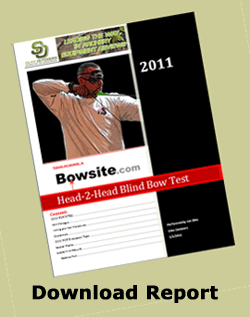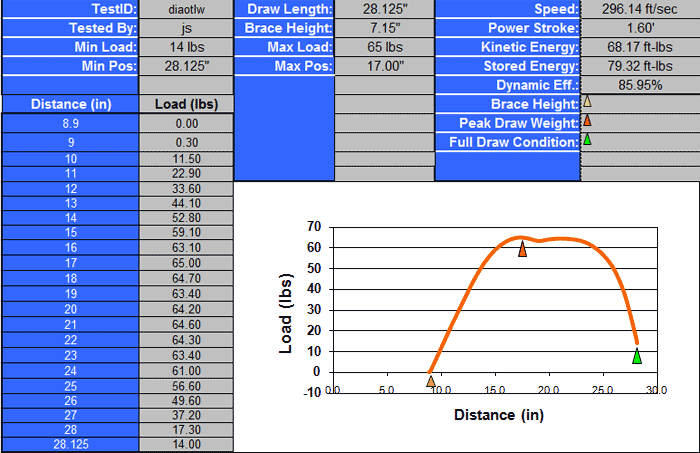Diamond Outlaw
Personal Commentary by Jon Silks about the Diamond Outlaw:
Before I get started with this bow it should be mentioned that it has the lowest Manufacturer's Suggested Retail Price (MSRP) of the bunch. The Outlaw will most likely be sold in stores for less than $500 and that is loaded with their R.A.K. system! Your R.A.K. equipped bow comes with a 4 inch stabilizer, comfort wrist sling, BCY string loop, Octane Hostage XL Arrow Rest, 0ne-piece 5 arrow Ultralite quiver, 4-Pin Truglo Apex sight, Dura-FLX String Dampening components and an alloy peep. All you have to do is buy some arrows and you are ready to go. The value is off the charts. Diamond had a tough test when put up against the other bows, most of which have MSRPs far above the Outlaw (200 to 400$ more!). The Diamond rig did not crack the top 4 in any of the categories. A ridge where the grip meets the web of the hand was an issue, as it was not blended well with the shape of the riser. Shot noise was not objectionable; however, it had a different frequency that was not popular. A solid back wall and shoulder-soothing letoff made shooting the Diamond a pleasure.
|
|
||||||||||||||||
Using the Above Table: Kinetic Energy: (in foot-pounds)
This is the energy that actually goes into propelling the arrow. Basically it is the energy that is left over from the stored energy after all of the bow system friction is accounted for. Using The Above Graph: The area under the graph signifies the amount of energy stored by the system from brace height to full draw (power stroke). The shape of the curve is generated by a plot of draw weight in pounds against draw length in inches and gives an indication of how the bow will feel when drawn. The more rounded the curve the more "smooth" the feel of the draw cycle, however, if the curve is "squared-off" it will likely feel more aggressive. The trade off comes in performance, as the more aggressive curve is generally indicative of more stored energy and more speed.
|
|||||||||||||||||





